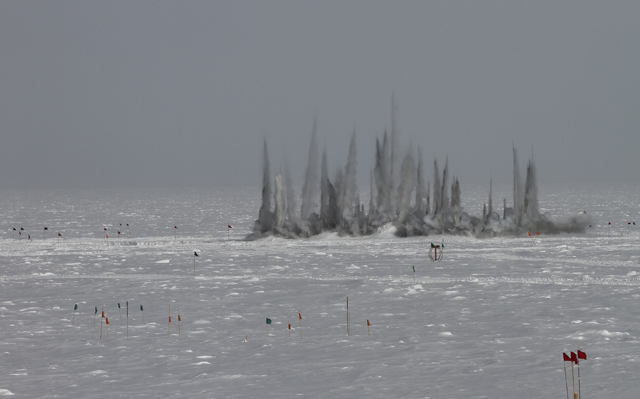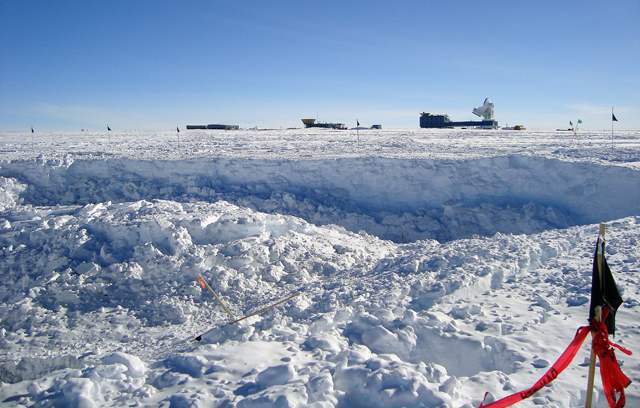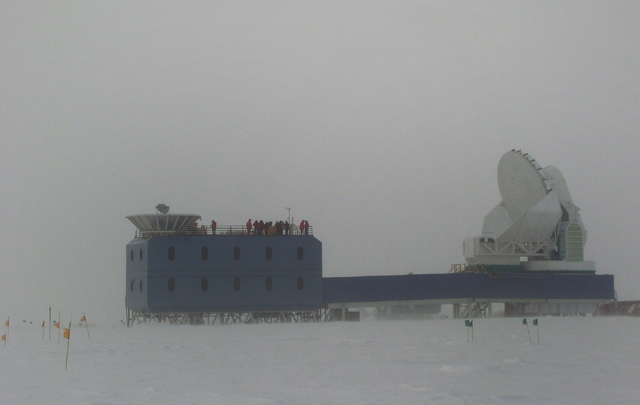Blast to the pastDemolition of 'Old Pole' under the ice removes safety hazardPosted February 25, 2011
“Good. Let’s get the hell out of here.” — Adm. George Dufek to his men as they started to succumb to frostbite soon after arriving at the South Pole and planting the American flag on Oct. 31, 1956. And then there was one. The United States has built three research stations at the South Pole since Adm. George Dufek’s hasty retreat nearly 55 years ago. Now only the latest generation — a gleaming facility built on stilts — remains. Last year, the U.S. Antarctic Program “It took a lot of effort and a lot of people. But we got it done in a timely fashion,” said Andres Martinez, South Pole Technical Support manager, from the comfortable confines of his office in what most Polies still refer to as the new station several years after its official dedication in January 2008. Martinez led the effort to finish a job that Mother Nature had begun not long after members of the Seabee construction battalion departed in January 1957, as drifting snow and ice quickly buried the buildings. The station was intended to last only a couple of years, but the scientific campaign was so successful that the United States and many of the other nations involved in the IGY continued to use many of their research bases. In the case of the first South Pole Station Dick Wolak, the civilian South Pole Station manager for the transition from Old Pole to the new Dome Station in 1974-75, summed up the state of the IGY base in an article he wrote for the Fall-Winter 2002 edition of The Polar Times, a publication of the American Polar Society “The old station, no longer the object of structural or mechanical improvements, gamely carried on. It showed its years in the distortion of buildings, metal arches, and shoring timbers. Its generators were a constant problem, and often irregular in their output. The patchwork of devices used to heat buildings and provide water was notably inefficient in its use of costly diesel fuel.” During that season, everyone eventually moved from Old Pole into the buildings under the geodesic dome, an unheated structure that offered protection from the wind and blowing snow. Wolak was the last one to leave Old Pole, literally turning off the lights as he moved his personal belongings to the Dome Station about a mile away. “But that didn’t happen for several days,” he wrote, “as we were moving massive quantities of equipment and supplies from Old Pole, and the heat and power were great benefits. The lights finally did go out on Feb. 3.” Today, the entire facility is entombed under about 30 feet or more of snow, having moved away from the geographic pole with the slow drift of the ice sheet. But the surface above is unstable. In the last couple of years, several heavy machines have fallen through the snow. One Caterpillar Challenger broke through several stories into one of the IGY station buildings last season. The driver was unhurt. The National Science Foundation |



For USAP Participants |
For The Public |
For Researchers and EducatorsContact UsU.S. National Science FoundationOffice of Polar Programs Geosciences Directorate 2415 Eisenhower Avenue, Suite W7100 Alexandria, VA 22314 Sign up for the NSF Office of Polar Programs newsletter and events. Feedback Form |





